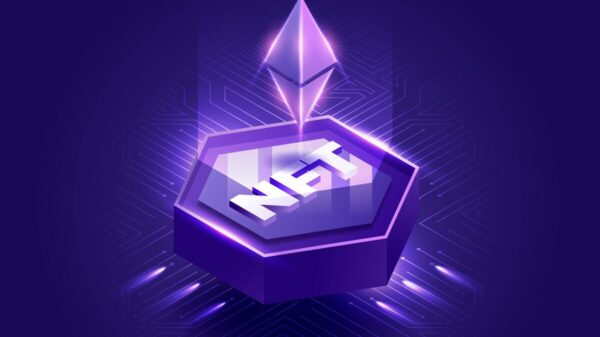From 2016, we are hearing a lot about the technological impact in the insurance industry including all the consequences. However, the main motive of advancement in technology is to automate the repetitive tasks in every business, so they could be more focused on customers and increase their profits.
But, why this change is being addressed more in the insurance industry than any other sector?
As the insurance business, a few decades ago, was a “scapegoat” for customers due to inefficiency in claims, policy management, increasing competition, stringent regulatory compliance, etc. This enforced the insurance business owners to transpire with the latest technology and simplify their insurance back office process.
And it is never too late to be what you might have been. The report cited by researchers focuses that technology is booming the insurance sector at a whopping ratio of 75%.
For example, in the recent years, Uber and Lyft have disrupted the transport industry massively. Even my friends haven’t used taxi since 2014 due to reasonable fares and better customer service. Equally, the emergence of AI, blockchain and drones have permeated across the insurance business enabling them to focus more on customer service rather than juggling with documents.
What are blockchain and drones?
Blockchain and drones have busted the bubbles of data in the insurance sector. Typically, blockchain has the nodes that manage the database of the insurance industry on a daily basis. It decentralizes the data and operates on a user-to-user basis, which eventually helps to maintain efficiency in the workflow. Whereas, drones are responsible to evaluate risk factors in any policy coverage according to the situation. Drones have infra-red cameras, GPS, laser and controlled by a remote system.
Here is a quick list of how these disruptors are helping insurance firms in their crucial tasks:
Efficiency while processing claims-
Many individual struggles to gain insurance coverage either for their business or themselves. And they realized the significant amount of time and effort that it took to settle the claim is excessive. And longer processes usually shoot the costs, that’s why many individuals or businesses across the nations are either underinsured or uninsured. Here come blockchain and drones into play.
These two can easily reduce the insurance claims management timeframe and speed up the process. Blockchain enables individuals to create an identity that has all the significant background information and is encrypted, which is a block. Individuals can grant the access to carriers to verify all the relevant documents quickly and securely in this verified and protected block.
With drones claim adjusters in the insurance firms can easily evaluate the risk assessed in damaged properties using sensors and capturing images of that insured location. This help to claims adjuster to predict effects and maintain a smooth workflow.
Reduction in fraudulent claims-
Another impact of these disruptors is the reduction in the fraudulent claims. Earlier, frauds in claim processing were the major problem that impacted insurance rates across the board. According to the Insurance Information Institute, fraud encompasses about 10% of property and casualty insurance losses and loss adjustment expenses annually. This graph is converted to approximately 32 billion dollars each year! Moreover, 57% of insurers foresee an increase in this type of fraud by policyholders.
How blockchain and drones can help to reduce the fraud?
For example, if you use blockchain registry in the life insurance sector it could lead to accurate payments in a time of need for many families. As the main concern in the life insurance is most of the families are unaware of where any document is kept after the death of insured person.
In such cases, blockchain would keep the documents secure along with the many users who have life insurance, moreover, after death, any other document could be uploaded to the block. So, this will help to reduce the chances of frauds and help the families to settle their claim easily.
Drones help insurance firms to evaluate the risk of any property before a life-threatening event occurs. So many individuals claim for unnecessary damages that don’t even exist just to receive more amount from the insurance firms. But with drones, insurance firms can capture the precise data prior to the risky event so that carriers can protect themselves from such fraudulent claims.
Integration with AI-
AI has become the new bandwagon among business and insurance firms are no exceptions in this regard. You can have a more efficient process if you integrate drones and blockchain with AI.
We know that blockchain encrypts the data of every insurer and the residing data is highly secure. But, blockchain is trustless as it can provide legitimacy without the intrusion of any trusted intermediaries. In this regard, AI can enhance the security of data efficiently. Moreover, blockchain can help you track, realize and explain decisions of AI. And, AI integrated with drones can allow you function more autonomously.
For example, IBM’s AI system, Watson, is capable of automatically processing midair imagery taken from drones, assess the damages for which individual has claimed and evaluate how much it would cost to repair damages. Another significant factor of drones with AI is it can overlook the risk of human error.
Conclusion
If we put together both the technology in the process it can fuel the growth of the insurance industry, which was never before. As the aim of technology is to use it for good… to benefit individual’s lives!
Mika Edward works as a Business Development Manager at Cogneesol, a well-renowned company offering Insurance back office services ,data management, accounting and legal services. She has been working with Cogneesol for the past 10 years and is responsible for generating sales for the Insurance division.
























































































































































































